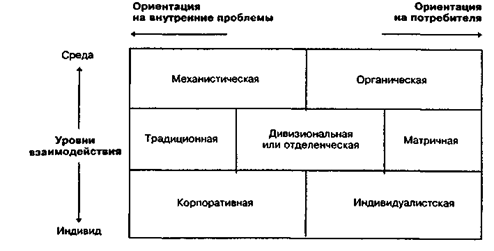home
 Management Management
 Management - Vikhansky OS Management - Vikhansky OS
|
Management - Vikhansky OS
Chapter 8 TYPES OF ORGANIZATIONS
The Committee takes root, grows,
blooms, withers and dies, and from
his seed shall others grow
committees.
S. Parkinson
What is clear is that each organization is a fairly complex technical and economic and social system that reflects its identity and specificity. Describe the system may determine if the nature of the interaction at each of its levels, "the organization - environment", "division - division" or "group - a group", "the individual - organization."
Methods of interaction between the parties characterize the system in question in a certain way and allow us to judge how well it copes with its main task - the organization of the harmonic interaction between the individual and the environment. The important place in the structure of the organization takes, through which or through which this interaction occurs.
According to the current theory and practice, interaction at the level of "organization - environment" can be carried out using organic or mechanistic approaches and, accordingly, the organization can get one of these characteristics. The interaction at the level of "unit - unit" or "group - the group" realized by the combination of different types of departamentizatsii and acts within the framework of organizational structures: traditional, or of departmental divisional, matrix. Finally, on the "individual - the organization of" the level of interaction depending on which side is playing a leading role, can give the organization "individualistic" or "corporate" in nature (Figure 8.1.).

Fig. 8.1. Characteristics of the organizational system



Comments
Commenting, keep in mind that the content and the tone of your messages can hurt the feelings of real people, show respect and tolerance to his interlocutors, even if you do not share their opinion, your behavior in terms of freedom of speech and anonymity offered by the Internet, is changing not only virtual, but real world. All comments are hidden from the index, spam control.